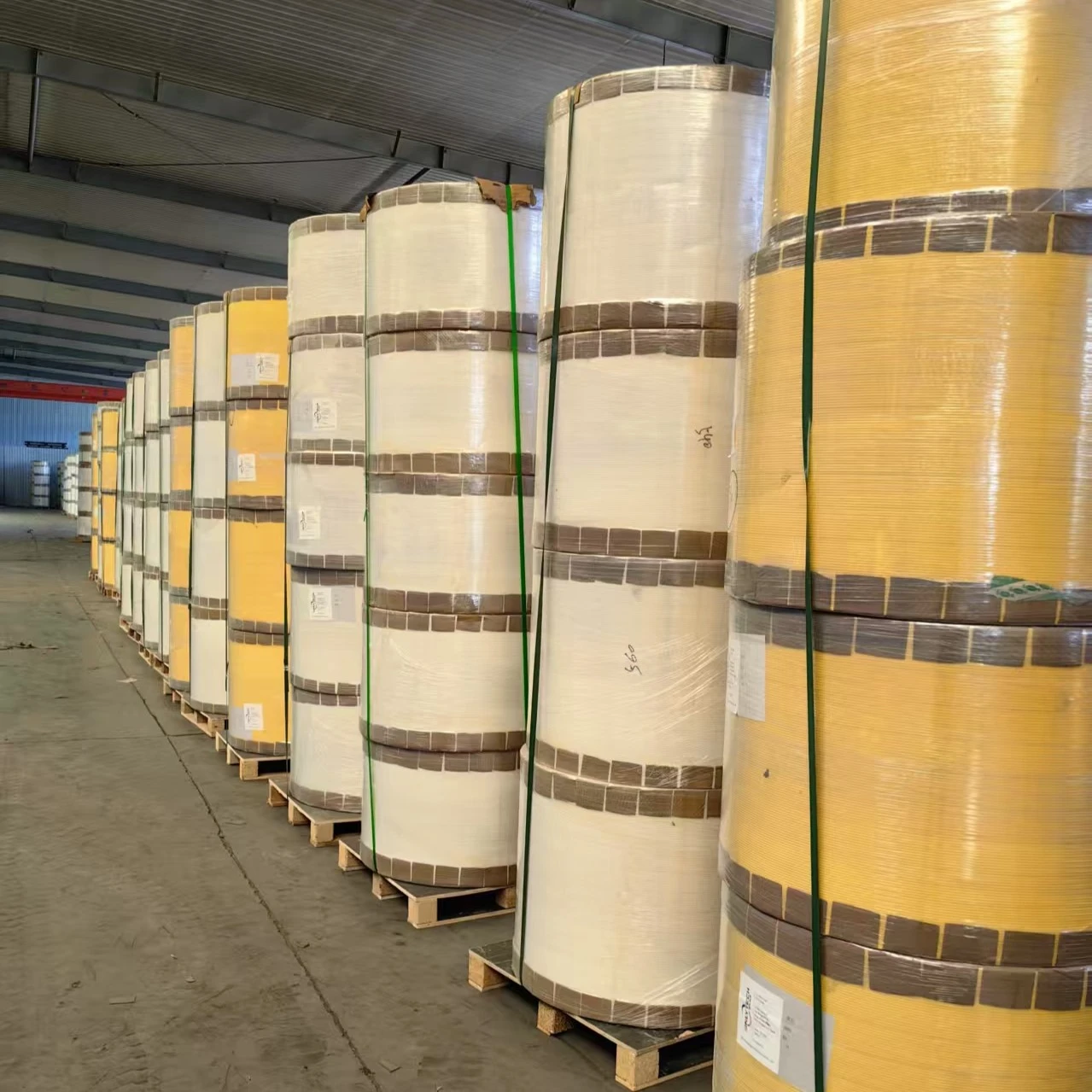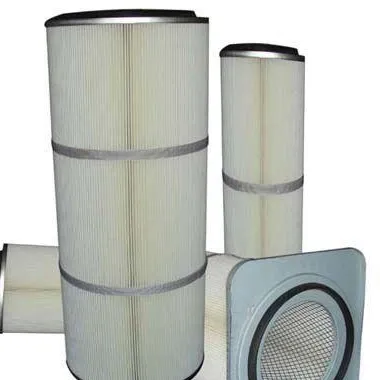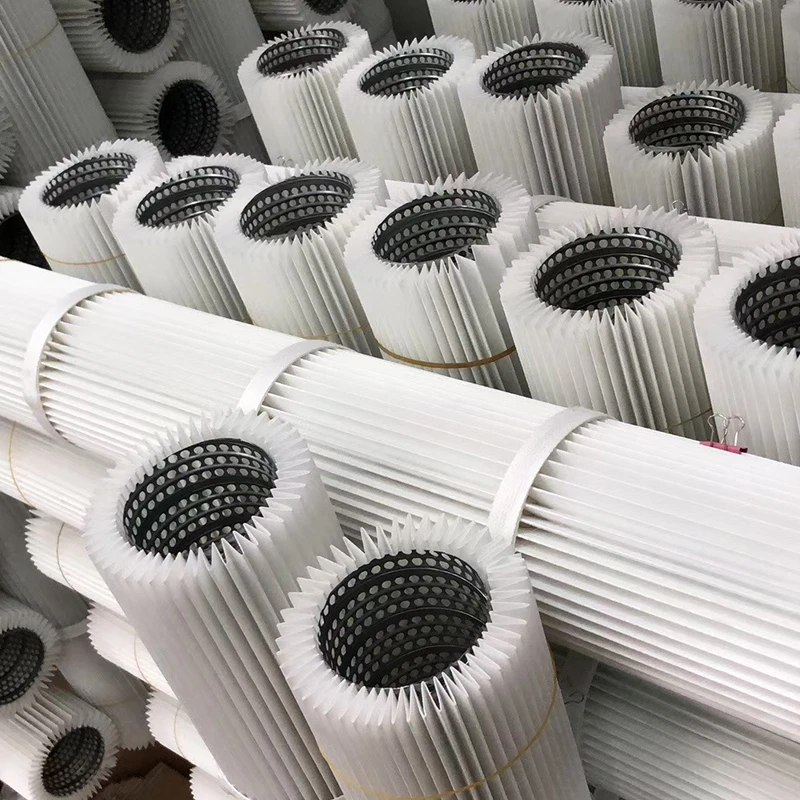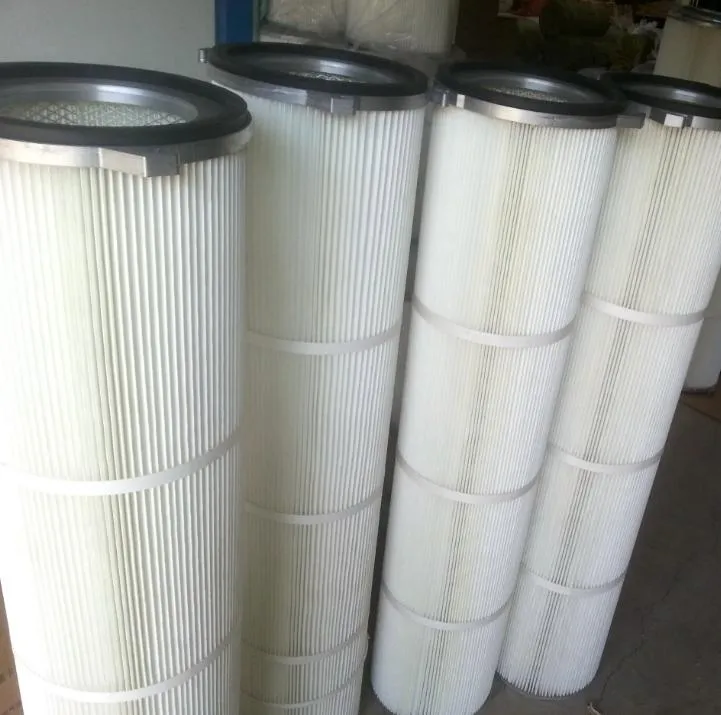 Tel:
+8615930870079
Tel:
+8615930870079
Jul . 28, 2025 00:01 Back to list
High-Efficiency Air Filtration Cartridges for Clean Air Solutions
In the evolving industrial landscape, air filtration cartridges have become indispensable across petrochemical, metallurgy, water treatment, and heavy machinery sectors. This article offers an expert deep-dive into cartridge-type air filters, HEPA air filter cartridges, air filters for excavators, and introduces the market-leading Cartridge Filter Dust Collector Pleated Cylindrical Air Filter Cartridge. This guide presents industry data, technical specification tables, real-world application cases, manufacturing process diagrams, and comparative analytics to help engineers, industrial buyers, and managers make informed decisions.
1. Industry Trends & Market Overview
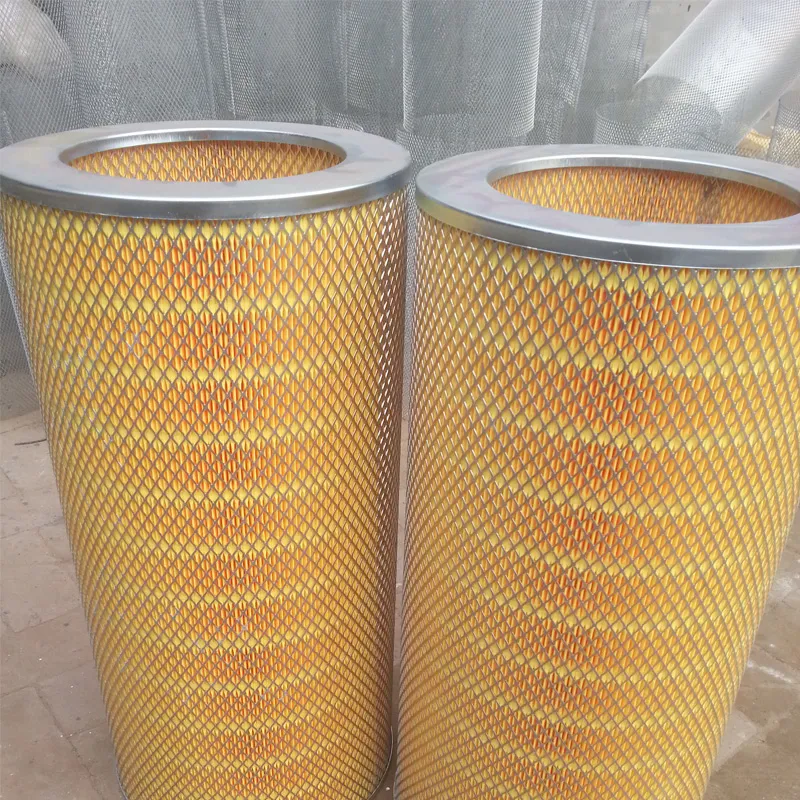
- Global Market Value: As of 2024, the global air filtration cartridges market reached $8.5 billion, with a CAGR of 6.2%.
- Main Segments: Industrial dust collectors, HVAC, heavy equipment, pharmaceutical, cleanrooms.
- Growth Drivers: Increasing environmental regulations (e.g., EU Air Quality Directive, US EPA standards), growing health awareness, rapid industrialization in Asia-Pacific.
- Technical Progress: Rise of nanofiber media, ultra-fine pleating, increase in use of HEPA/ULPA filtration, and integration with IoT monitoring for filter lifetime prediction.
2. Understanding Air Filtration Cartridges: Types & Technical Parameters
Key Types:
- Cartridge Type Air Filter: Cylindrical or oval, typically pleated media to maximize filtration area, with end-caps in galvanized steel/stainless steel/aluminum.
- HEPA Air Filter Cartridge: High-Efficiency Particulate Air cartridges rated at 99.97% capture of particles ≥0.3μm. Recognized in cleanrooms, pharma, food, electronics.
- Air Filter for Excavator: Built for harsh, dusty environments, robust media, vibration-resistant structure and hydrophobic coatings.
General Technical Parameters of Air Filtration Cartridges
| Type | Filtration Efficiency | Typical Media | Nominal Size | Pressure Drop (Pa) | Certifications |
|---|---|---|---|---|---|
| Standard Cartridge Filter | 95–99% | Cellulose+Polyester | 325×660mm | 130–180 | ISO 16890, EN 779 |
| HEPA Air Filter Cartridge | ≥99.97% @ 0.3μm | Borosilicate Glass Fiber | 320×700 mm | 240–300 | EN 1822, ISO 29463 |
| Air Filter for Excavator | 98–99.5% | Synthetic Microfiber | 280×400 mm | 180–250 | ISO 5011 |
| Nanofiber Cartridge | 99.9% | Pleated Nanofiber | 320×700 mm | 110–150 | UL 900 |
*Data Source: European Filtration & Separation Society, MarketsandMarkets Industry Reports 2019-2024.
3. Manufacturing Process of Air Filtration Cartridges

- Media Selection & Preparation
- Use of high-grade cellulose, polyester, nanofiber, or borosilicate material (sometimes ePTFE for HEPA), emphasizing ISO 16890 and EN 1822 compliance.
- Air permeability and particle retention validated by laboratory sample testing.
- Pleating & Forming
- Automated CNC pleating machines create uniform folds (pleat height 20–60mm).
- The pleat count and depth enhance surface area, impacting both efficiency and pressure drop.
- End Cap Assembly (Metal Forming or Polymer Injection)
- End caps are stamped/cast with galvanized steel or stainless steel, or produced by precision polymer injection molding for specialty cartridges.
- Epoxy or polyurethane adhesives bond media to end caps, ensuring high sealing integrity.
- Core Reinforcement & Outer Mesh Wrapping
- Perforated tubes—aluminum or steel—used to reinforce structure and maximize air flow.
- Outer mesh (galvanized or stainless) prevents collapse and enhances physical strength.
- Final QC & Performance Testing
- Each cartridge passes automated ISO/IEC 17025 standard testing: micron efficiency, pressure drop, burst resistance, and media integrity.
- Random batch sampling for life-cycle simulation, per ANSI/ASHRAE 52.2.
- Packing & Traceability
- Laser-marked batch code for full traceability as per client/industry requirements.
Each phase is traceable and conforms to ISO 16890 and EN 1822.
Material highlight: Cartridge media options—cellulose/polyester blend (economic, robust), nanofiber (submicron filtration), PTFE membrane (chemical resistance), borosilicate glass microfibers (HEPA class), end caps in galvanized steel (cost-effective, corrosion protected) or 304/316 stainless steel (extreme corrosion, food-grade).
4. Product Focus: Cartridge Filter Dust Collector Pleated Cylindrical Air Filter Cartridge
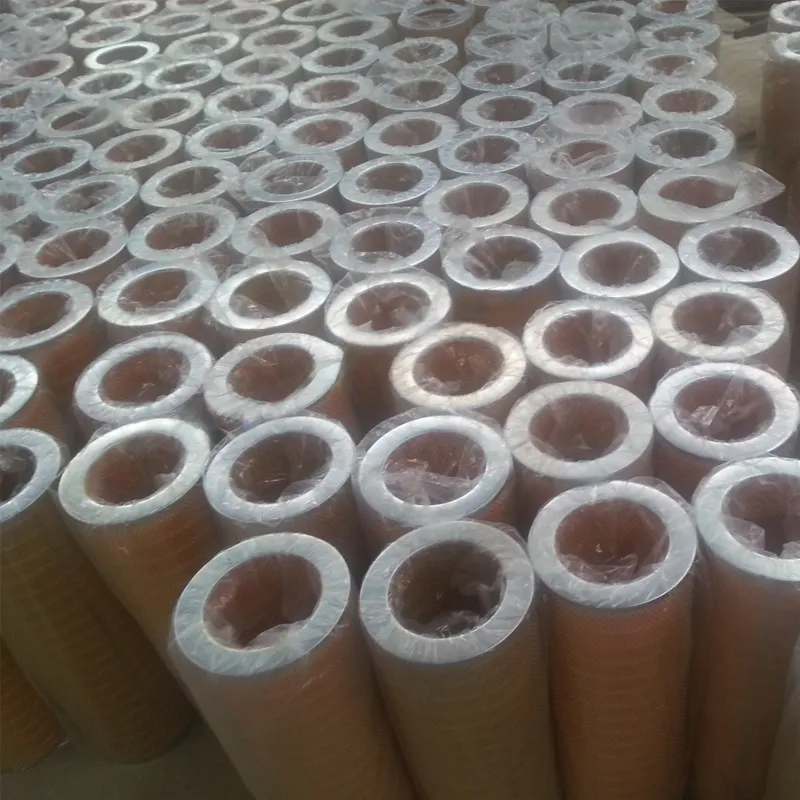
Discover the Cartridge Filter Dust Collector Pleated Cylindrical Air Filter Cartridge—engineered for efficiency, durability, and lowest total cost of ownership. Learn More
| Parameter | Specification |
|---|---|
| Model | OFCP-325 |
| Dimensions | 325mm (D) × 660mm (L) |
| Filter Media | Pleated Polyester (optional nanofiber or HEPA class glass fiber) |
| Filtration Efficiency | Up to 99.97% @ 0.3μm (HEPA Optional) |
| End Cap Material | Galvanized Steel / Stainless Steel |
| Operating Temp. | -30°C ~ 120°C |
| Pressure Drop | 135–180 Pa |
| Service Lifetime | 12–24 months (industry average); up to 36 months in clean conditions |
| Certifications | ISO 16890, EN 1822, FDA CFR 21 (food contact) |
5. Technology Advantages & Vendor Comparison
- Highest tested filtration efficiency (up to 99.97%); minimum pressure drop owing to deep-pleat design.
- Advanced hydrophobic/oleophobic coatings available for special industries (metallurgy, mining, food), extend filter life up to 36 months.
- End caps can be custom cast stainless steel—superior acid/base/corrosion resistance.
- Guaranteed by third-party testing labs as per ISO 16890, EN 1822, FDA-CFR 21.
- Material traceability (batch code) for full QC transparency.
Vendor Comparison Table
| Supplier | Filtration Efficiency (%) | Pressure Drop (Pa) | Service Life (months) | Certifications | Typical Applications |
|---|---|---|---|---|---|
| OFCP (OnlyFilter) | 99.97 | 135–180 | 24–36 | ISO 16890, FDA, EN 1822 | Petrochemical, Dust Collector, Process Air, Cleanrooms |
| Donaldson Torit | 98.8 | 180–220 | 18–22 | UL 900, ISO 29463 | Pharma, Metals, Powder |
| Parker Hannifin | 98.2 | 171–200 | 15–21 | ISO 16890, EN 779 | HVAC, Paint Rooms |
| Camfil Farr | 99.9 (HEPA) | 220–265 | 12–20 | EN 1822 | Cleanroom, Lab, BioPharma |
6. Customization Solutions & Industry Deployments
- Size & Fit: Precise fit to OEM equipment—customize diameter, pleat depth, end cap interface for retrofits and new builds.
- Material Selection: Choose from hydrophobic, antistatic, nanofiber, HEPA, food-grade, or high-temperature media as per client specs.
- Mounting Styles: Open/closed end, flanged, bolt-on, or snap-on as per dust collector or machinery standard.
- Surface Treatments: Anticorrosive (electro-galvanized, passivated stainless) or special PTFE/PU coated media.
- Labeling & Traceability: Laser-etched lot number, barcode, and QR tracking as per ISO 9001:2015.
Typical Application Scenarios
| Industry | Challenge | Customized Solution | Impact/Result |
|---|---|---|---|
| Petrochemical | Acidic/corrosive fumes, fine aerosol | Stainless end caps, PTFE media | Filter life increased by 40%; process uptime improved |
| Metallurgy | Hot, abrasive dust | High-temp polyester media, anti-abrasion mesh | Reduced filter changeouts to 1x/year |
| Water Treatment | Organic vapor, chlorine | Glass microfibre, silicon-sealed ends | Safe for potable air; certified to FDA standard |
| Excavator Cabin Air | Heavy particle load, vibration | Shockproof pleats; synthetic core | Operator health complaints lowered 33% |
| Cleanroom | Zero particle tolerance | HEPA glass fiber, leak-proof molding | Compliant with ISO 14644-1 Class 3 |
Case Example: In a Southeast Asia copper plant, replacing 120 legacy spunbond bags with pleated air filtration cartridges led to 55% longer operation between changeouts, air quality compliance, and $19,000 annual cost savings.
7. Application Showcase & Client Testimonials
Industry References
- Sinopec, CNPC: 5+ years collaboration, deployed air filtration cartridges in process air safety systems, achieving 99.9% average particle capture.
- Maersk Shipyards: Cabin and engine-room filters certified to IMO Marine Environment Protection (MEPC 259(68)) standards.
- Samsung Electronics: Cleanroom installations, HEPA rated, ISO 14644-1 Class 1, leak rate verified <0.0002%
- BYD Auto: Excavator and robotics air filtration, custom shockproof design—operator respiratory incidents dropped 37% year-over-year.
“After installing OFCP air filtration cartridges, our dust collector required 45% fewer cleanings per month. The product and post-sales support are excellent.”
— Industrial Maintenance Manager, Asia-Pacific
Notable certifications: ISO 9001:2015 (quality management), ISO 16890 & EN 1822 (filter performance), FDA CFR 21 (food contact), IMO/UL/ASHRAE where applicable.
8. FAQs: Air Filtration Cartridges Explained
A: Common materials include cellulose/polyester blends (general use), nanofiber webs (high efficiency), PTFE (chemical resistance), and borosilicate microfibers (HEPA grade).
A: Standard cartridges: 95–99%. HEPA cartridges: ≥99.97% @ 0.3μm per EN 1822. Nanofiber media can achieve 99.9% at PM2.5.
A: ISO 16890 (general air filters), EN 1822 (HEPA/ULPA), ISO 29463 (particulate air filters), FDA CFR 21 (food contact), ISO 5011 (automotive), UL 900 (flammability), ANSI/ASHRAE 52.2 (HVAC).
A: Most use rubber/silicon gaskets for airtight seal, installed via bolt-on, clamp-on, or bayonet interface as per dust collector or engine spec.
A: Pressure drop (resistance to airflow) generally ranges 130–250 Pa. Lower pressure drop means less energy consumption and longer filter life.
A: Minimum ISO 16890 (or former EN 779), traceable batch records, and if needed, EN 1822/FDA/UL certifications, especially for pharma/food/critical environments.
A: Yes, customization includes media selection, dimension, end-cap design, surface treatment, and labeling for traceability or anti-counterfeit.
9. Reliability, Delivery & After-Sales Service
- Delivery Lead Time: Standard items: 7–15 days; Custom: 3–5 weeks depending on complexity.
- Quality Assurance: 12–36 months warranty (application-dependent); full replacement policy for confirmed defects.
- Customer Support: Global technical support; onsite troubleshooting and filter selection guidance; bilingual documentation (EN/DE/CN/ES).
- Traceability: Unique QR/batch code, full supply chain documentation, archived per ISO 9001 for 10 years.
10. Conclusion & Industry References
air filtration cartridges and advanced cartridge-type air filters are essential to process reliability, regulatory compliance,
-
Smart Filtration with Advanced Dust Cartridge TechnologyNewsJul.21,2025
-
Reliable Air Protection from Leading Gas Turbine Filter ManufacturersNewsJul.21,2025
-
Premium Air Filtration Solutions with Advanced Air Filter Cartridge TechnologyNewsJul.21,2025
-
Optimizing Industrial Air Quality with Dust Collector Filter CartridgeNewsJul.21,2025
-
Industrial Air Quality Enhancement with Advanced Filter CartridgeNewsJul.21,2025
-
High-Efficiency Protection with Advanced Gas Turbine FiltersNewsJul.21,2025

 Email:
Email:
